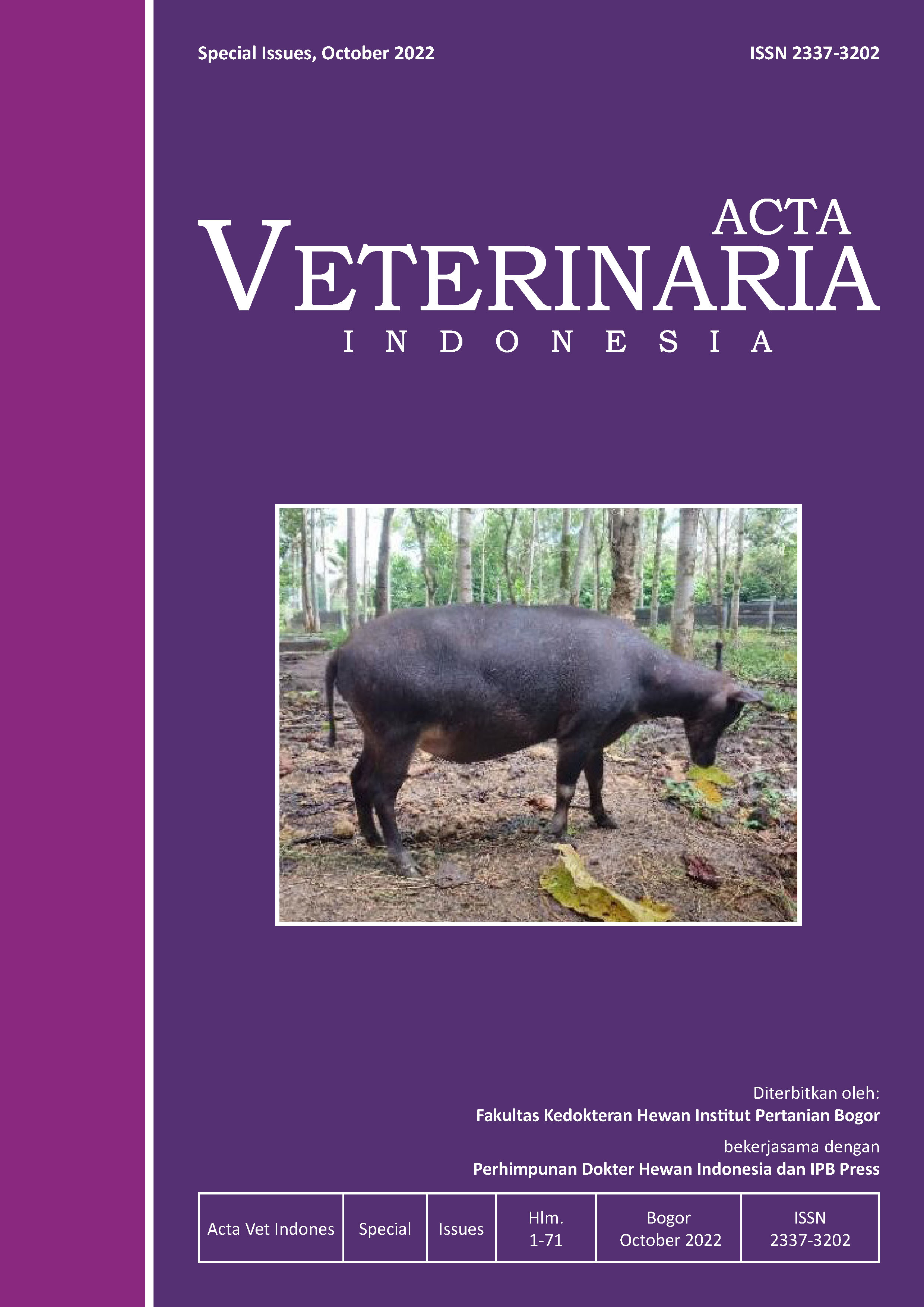Survei Ancylostomiasis pada Anjing di Wilayah Daerah Istimewa Yogyakarta
Abstract
The majority of Indonesians spend nearly all of their time at home during the Covid-19 epidemic. Owners and dogs are spending more time together at home. On the other side, there is a chance that dogs and other pets potentially transmit diseases to people. Helminthiasis, a condition caused on by the zoonotic parasitic worms, is frequently found in dogs. Some of the parasitic worms that are often found infecting dogs include Ancylostoma spp. Toxocara spp. and Dipylidium spp. The clinical symptoms of helminthiasis are non-specific, such as dogs having a thin body shape, weight loss and the consistency of soft to liquid stools. This study aims to determine the proportion of helminthiasis in dogs in the Special Region of Yogyakarta. This research was conducted with a survey approach involving a sample of 203 dogs. The specimens collected were feces from male and female dogs of various ages in the Special Region of Yogyakarta. Feces samples were examined using a qualitative method (native method) to identify worm eggs. The total number of helminthiasis cases identified from the examination of faecal samples was 19 out of a total of 203 dogs. The worm eggs identified were Ancylostoma spp species. (6.89%) Toxocara spp. (1.97%) and Dipylidium spp. (0.98%). The proportion of helminthiasis found in the Special Region of Yogyakarta is 9.35%.
Downloads
Copyright (c) 2022 Acta VETERINARIA Indonesiana

This work is licensed under a Creative Commons Attribution-ShareAlike 4.0 International License.
This journal provides immediate open access to its content on the principle that making research freely available to the public supports a greater global exchange of knowledge.
All articles published Open Access will be immediately and permanently free for everyone to read and download. We are continuously working with our author communities to select the best choice of license options, currently being defined for this journal is licensed under a Creative Commons Attribution-ShareAlike 4.0 International License (CC BY-SA).


_.png)
_.png)











